Sculptor Stefan Bishop Turns Raw Materials Into Avant-Garde Furniture
Bishop’s arty furniture has been collected by the likes of John Legend and Jennifer Aniston.
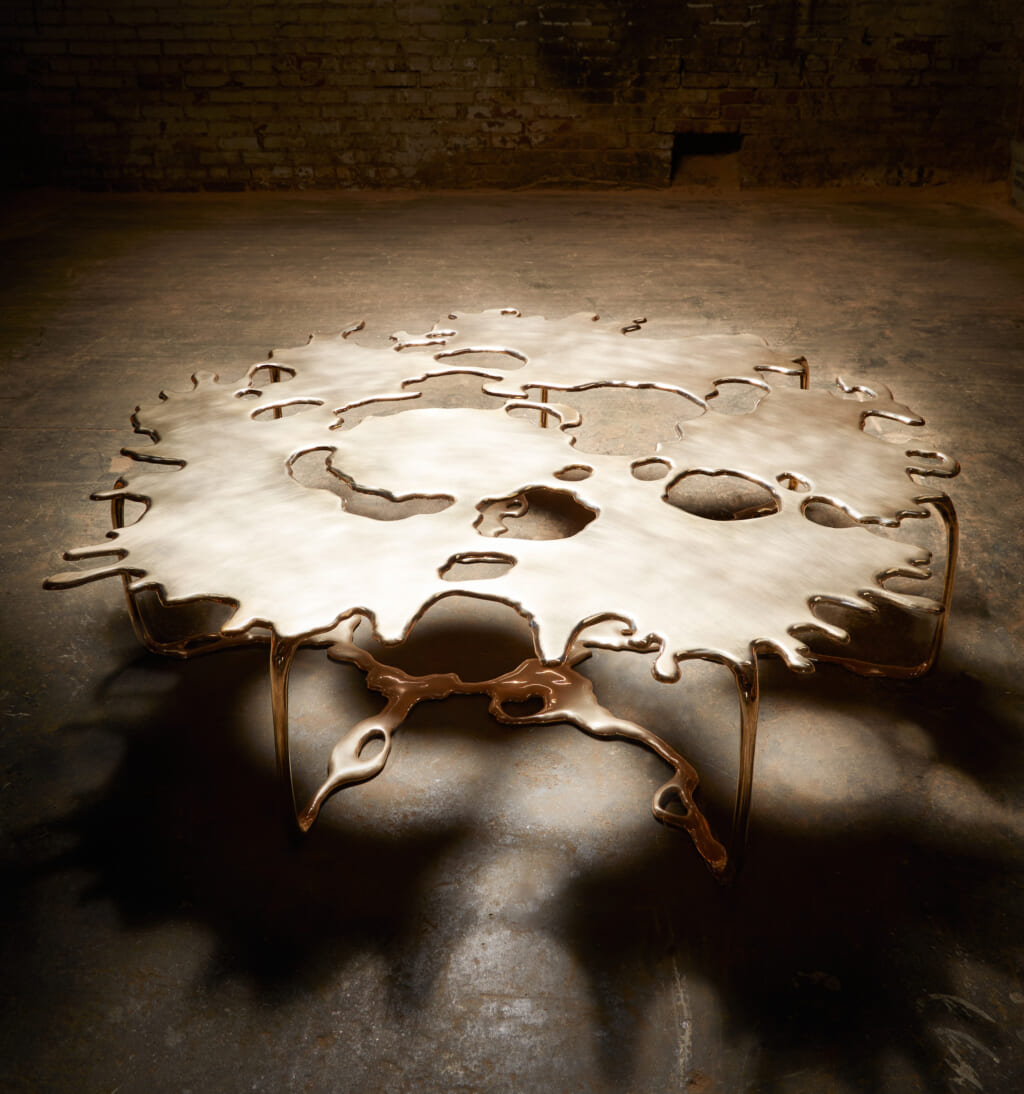
Los Angeles-based artist and designer Stefan Bishop transforms inanimate raw materials into dynamic, moving truths that often function as furniture, even while dancing, scintillating, even exploding in static space. His labor-intensive creations aren’t spontaneous, yet they look it.
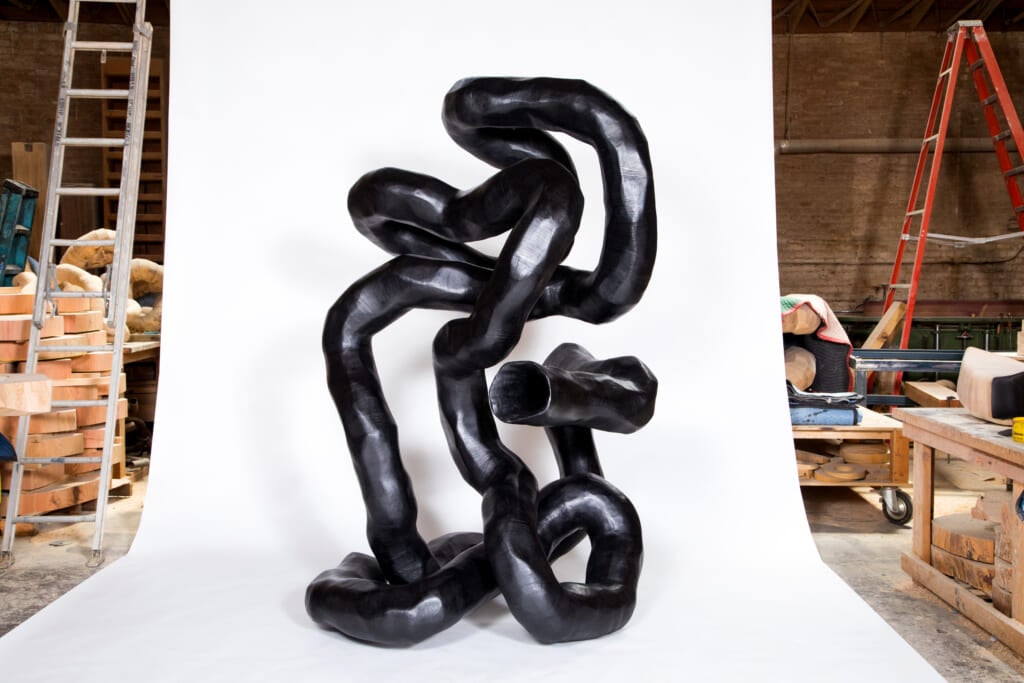
Represented by tastemaker Ralph Pucci since 2019, Bishop’s high craftsmanship has landed in the homes of stars like John Legend and Jennifer Aniston, along with scores more he doesn’t know—not just because contracts require non-disclosure agreements, but because deep down he’s still a kid amongst the redwoods on his family’s 50-acre homestead in Southern Oregon.
That’s where Bishop believes he attained his original love for wood. “Our father worked for the U.S. Forest Service,” he says. “He wasn’t a lumberjack, but he looked like a lumberjack.” Think: hard hat, suspenders, boots, and chainsaws.
Both brothers recalled witnessing their father fell a dead tree for firewood. “There was something kind of magical, a little bit dangerous,” they said. “The quiet of the woods, the smell of the sawdust and the chainsaw oil. It’s a full sensory image that probably never left us.”
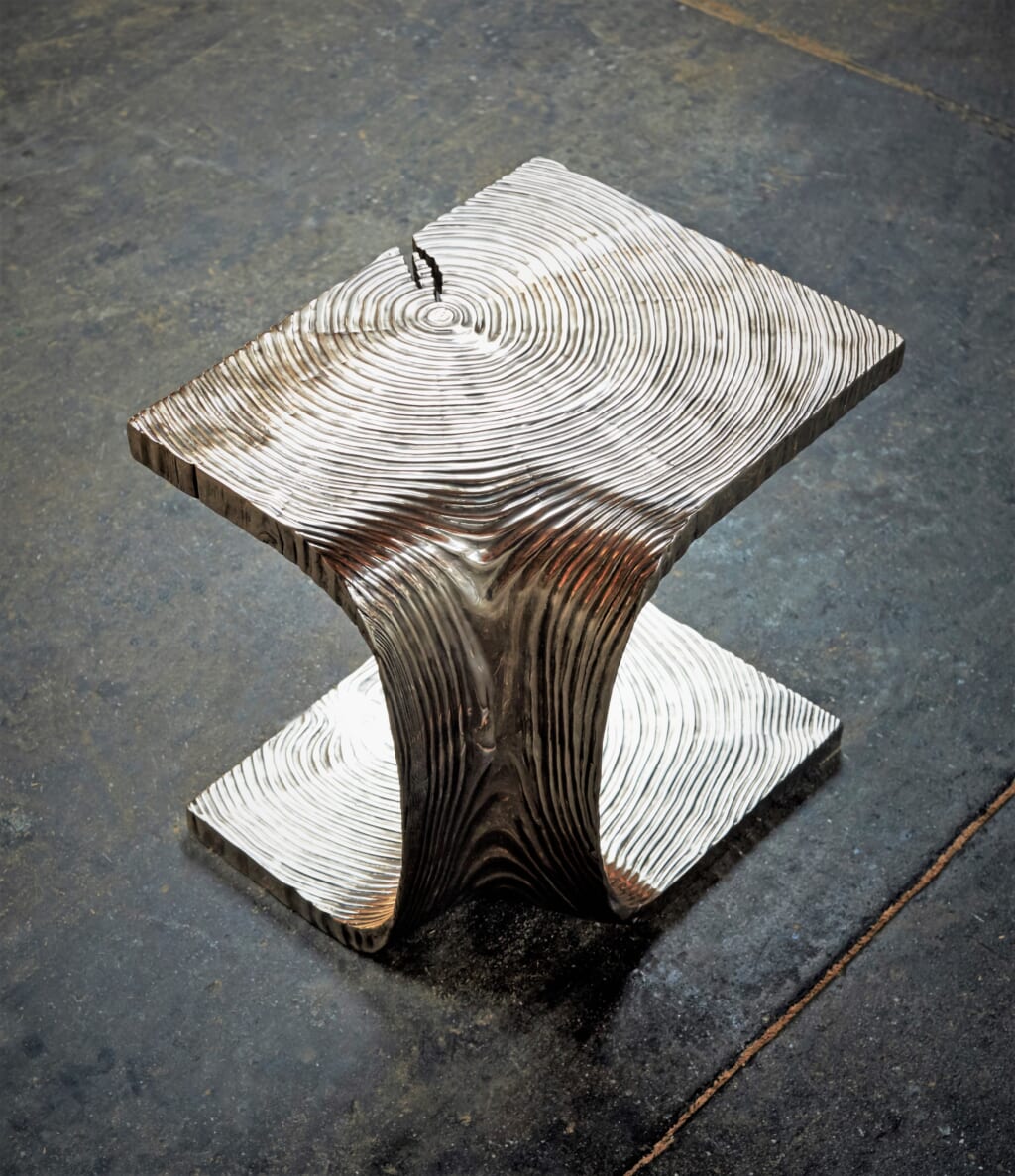
An appreciation for heavy machinery also stuck with him. At 19, Bishop started art school to earn an architecture degree, and ended up taking a woodworking elective. “As soon as I got into a woodshop, it was home,” he recalled. Wood came to represent “potential energy,” he added. “I wanted to create things out of it.”
Bishop left art school to apprentice with one expert in Berkeley and then another in Chicago to hone his woodworking chops. “What I hadn’t learned was the creative process,” he said. “I knew how to make things, but I was incredibly frustrated trying to figure out what I was gonna make—almost like built up sexual frustration, I couldn’t get it out.”
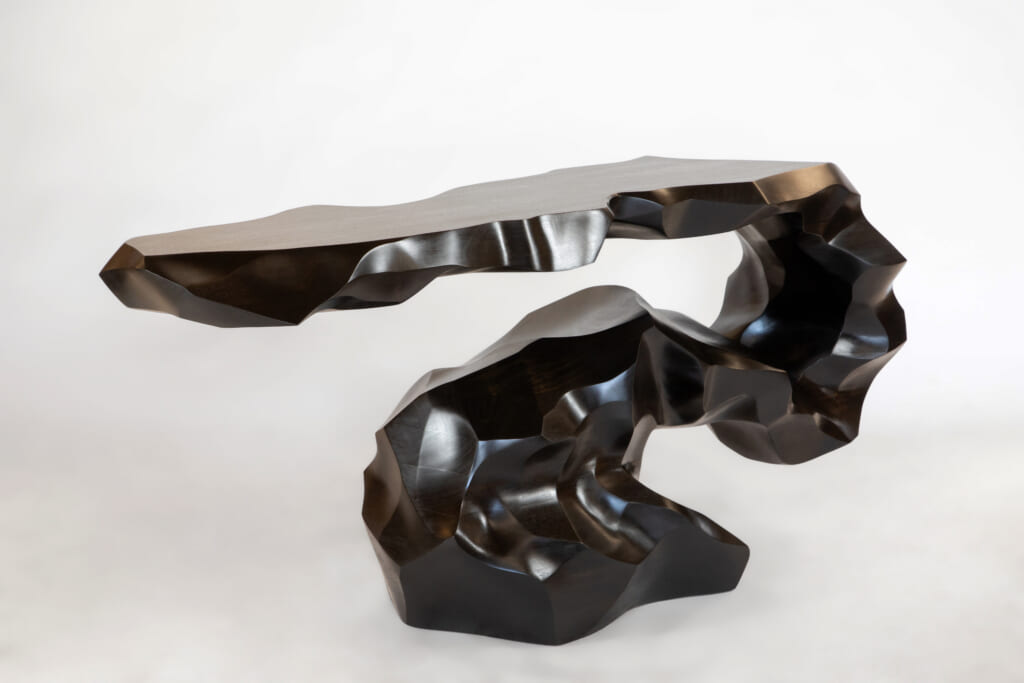
He skipped Chicago for L.A. in 1988, where he did engineering for some big furniture companies. Then, Bishop switched to interior design, handling hospitality projects for a boutique firm in Hollywood. He hit it big flipping houses on the side, and lost it all when the bubble burst in 2008. Following a divorce and a midlife crisis, Bishop remarried, and took a year off.
Sure, he’d tinkered with woodworking in the garage, but when Bishop’s wife went away for a retreat, he found himself alone for a few weeks. One night, an epiphany struck. He filled every available surface with fully-fledged design ideas. Everything he’d ever wanted to make, and more, now in concrete plans rather than amorphous ideas.
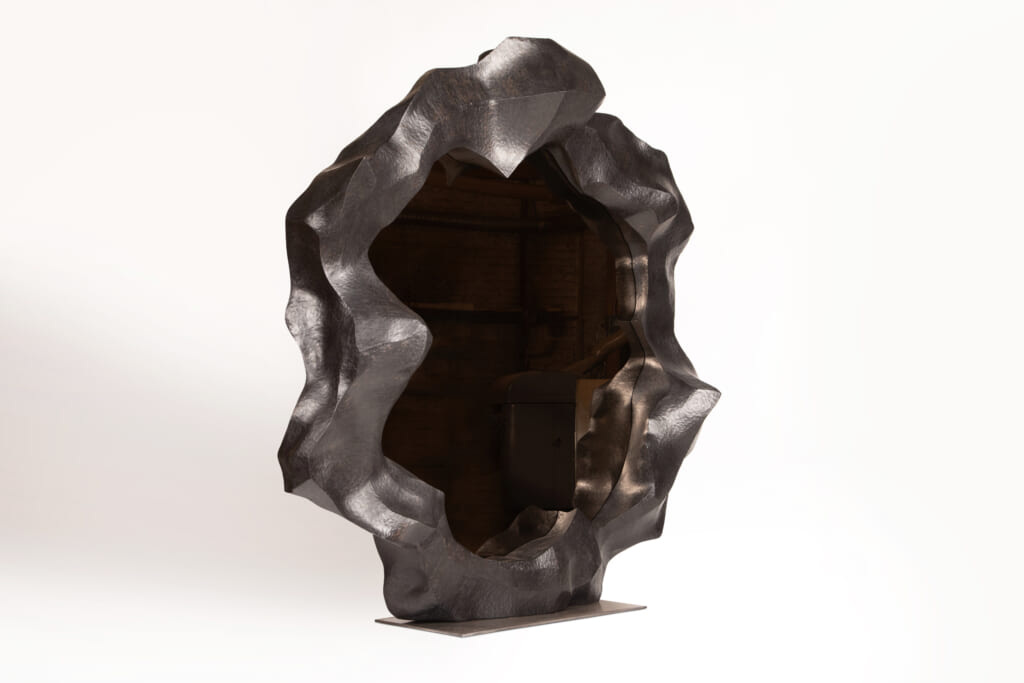
He opened his current studio in 2010, building his name with striking pieces of serious integrity, embodiments of his own creative flowstate.
“What I’ve learned since is that one of my best ways to sink into the creative mind is lots of meditative space,” Bishop said. That can mean time in nature, a long motorcycle ride, even going bananas to loud music.
“There’s also the beautiful moments of drifting off into sleep, or just waking up,” he added. “Always rife with creative activity when you’re somewhere between conscious and subconscious.”
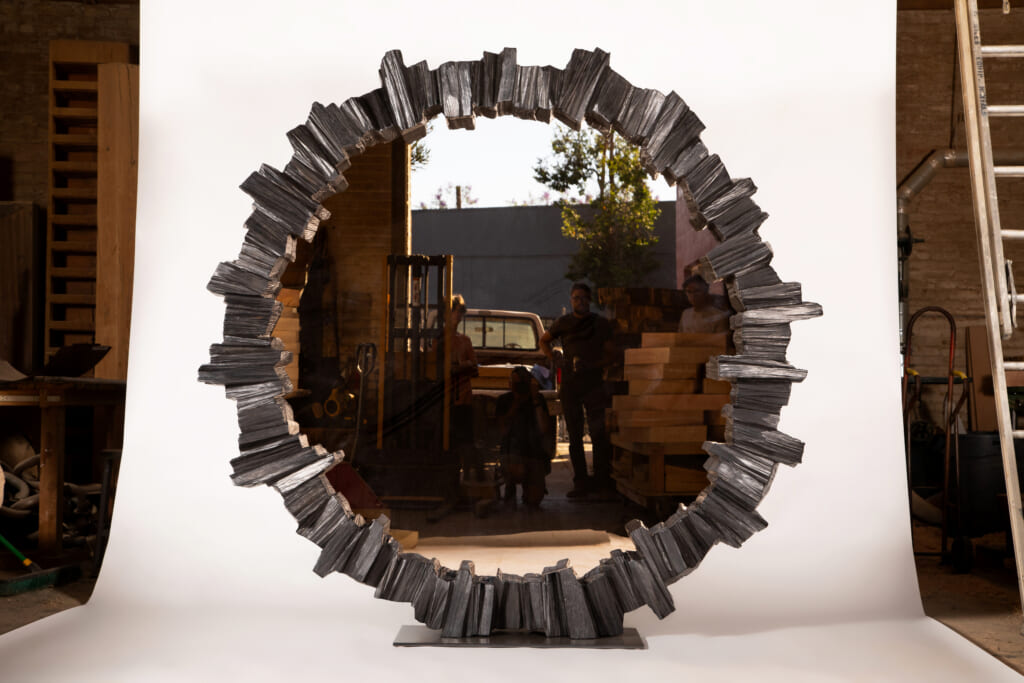
An ardent believer in grandiose spectacles, Bishop said his most memorable commission was a 2,000-pound bronze table for design firm Solis Bentancourt & Sherrill. Joining the Ralph Pucci roster, though, is like getting signed as a pro athlete. Bishop just had a show with Pucci in London, and he’s got another coming up in New York in January 2023.
In the meantime, the brothers are scaling their business with 3D rendering and CNC machinery, effortlessly retaining the human touch, since hand flourishes prevail even in digital drawing.
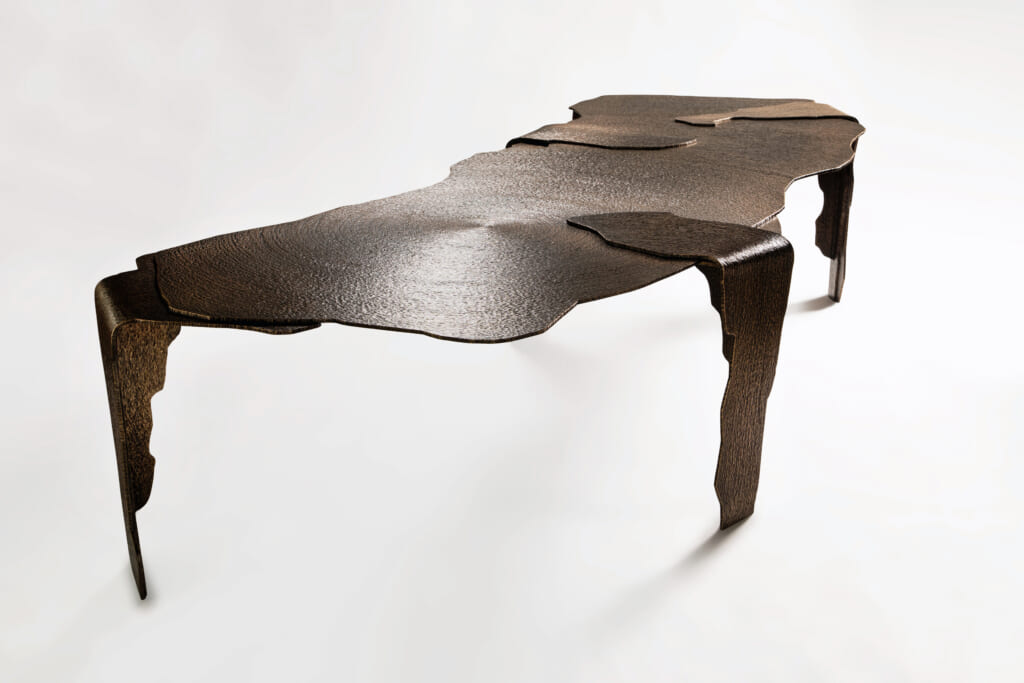
They might even enter the metaverse someday, but until then, they’re ready to leverage their success by giving back to the environment—with an undisclosed initiative in the works aimed at reforestation. “There are literally woods that we can’t work with anymore because they’re disappearing,” Adrian Bishop said. “Part of our giveback initiative is about planting trees.”
Charity’s a spoil of success, in this instance. Adrian added that “Stefan, even when he was selling to famous people, wasn’t making a ton of money on this stuff because it took so much effort and materials and time to make.”
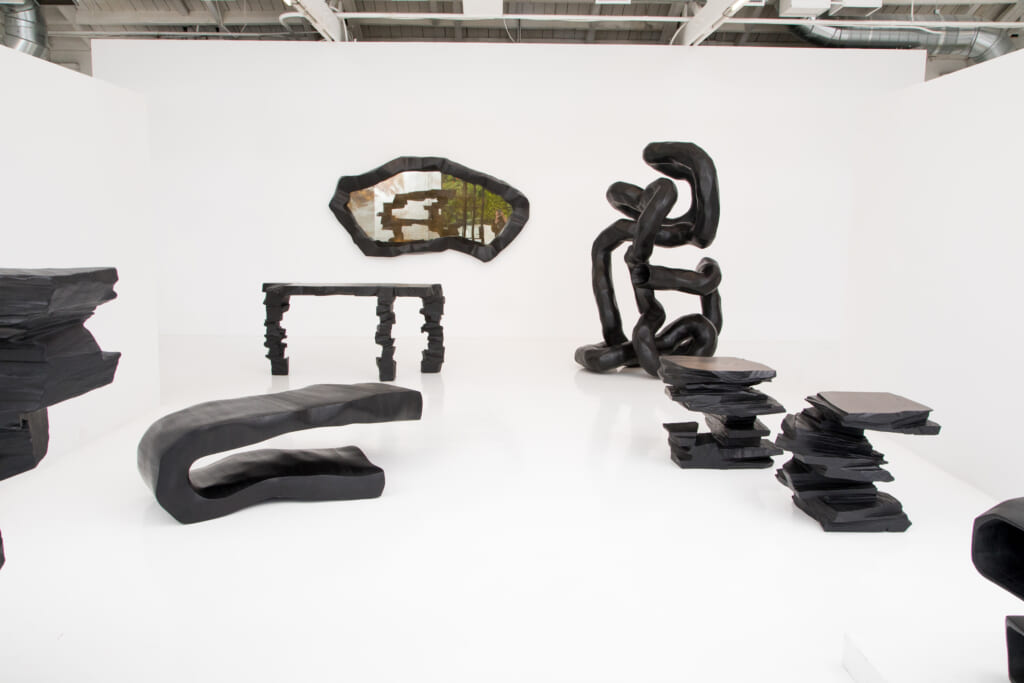
Most poignantly though, Bishop’s also interested in transcending furniture’s functional dictates with a full-circle return to fine art. “That’s a different animal than the design realm,” he said. But this time, he knows what to do.
